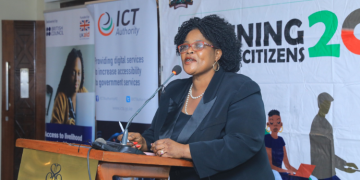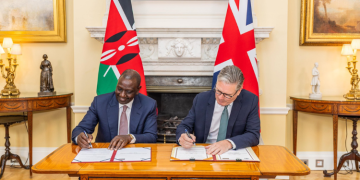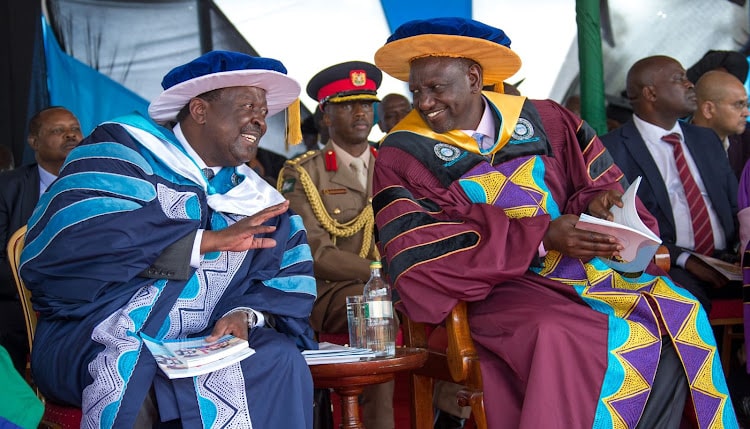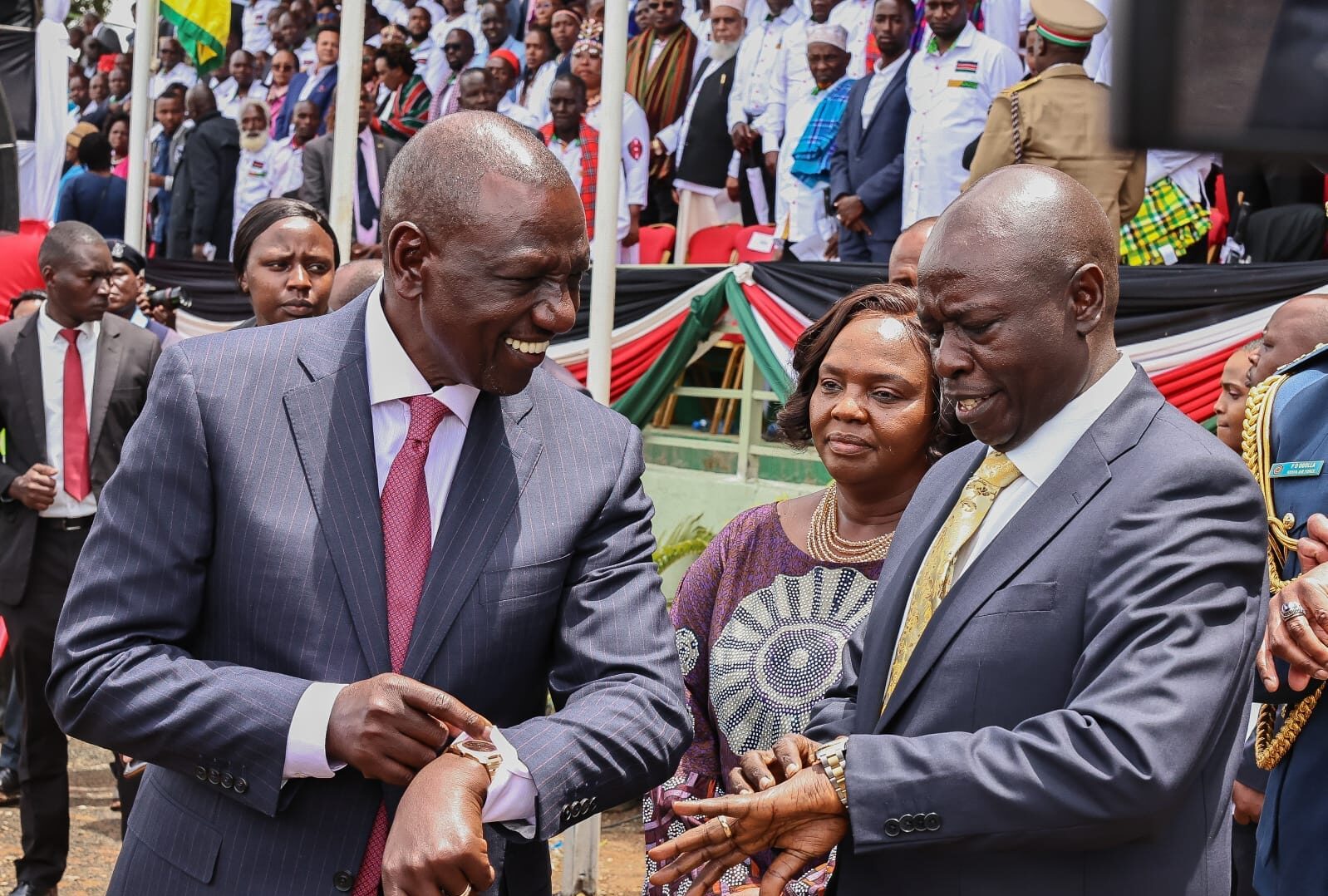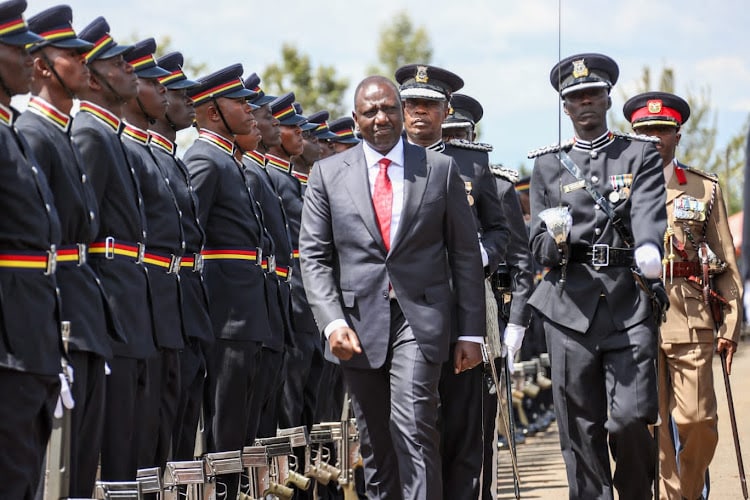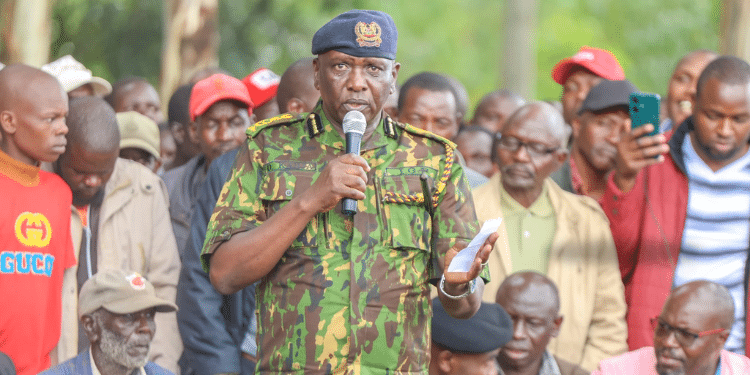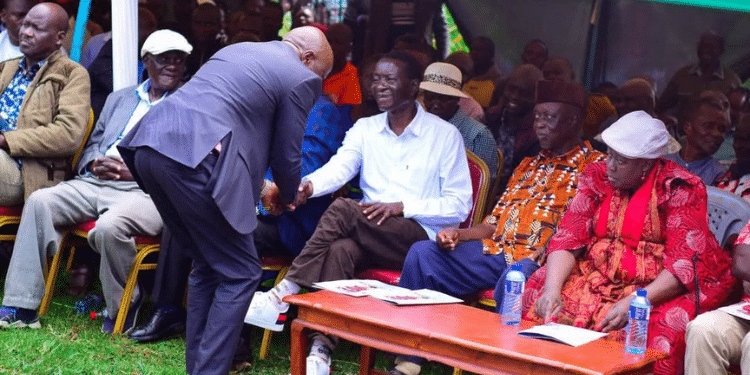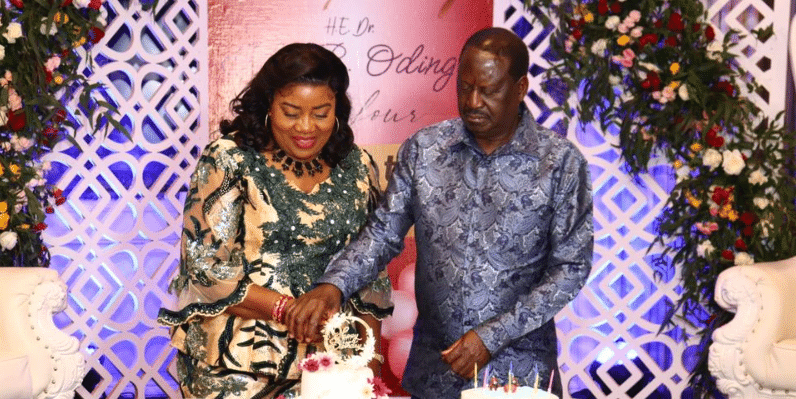THE KENYA TIMES ~ MISSION STATEMENT
The mission of The Kenya Times is defined in a set of principles written by the founding owner.
The Seven Principles for the Conduct of a Newspaper (Print or Digital)
- The first mission of a newspaper is to tell the truth as nearly as the truth may be ascertained.
- The newspaper shall tell ALL the truth so far as it can learn it, concerning the important affairs of America and the world.
- As a disseminator of the news, the paper shall observe the decencies that are obligatory upon a private gentleman.
- What it prints shall be fit reading for the young as well as for the old.
- The newspaper’s duty is to its readers and to the public at large, and not to the private interests of its owners.
- In the pursuit of truth, the newspaper shall be prepared to make sacrifices of its material fortunes, if such a course be necessary for the public good.
- The newspaper shall not be the ally of any special interest but shall be fair and free and wholesome in its outlook on public affairs and public men.
ETHICS POLICY
This represents a synthesis of The Kenya Times News policies and is not meant to be comprehensive.
These policies are meant to guide The Kenya Times News journalism team as we deliver news and information in a rapidly changing media environment.
We consider these guidelines to be a “living document” that we will continually modify, and update based on feedback from our journalists, from our readers, and from our perceptions of our changing needs.
Because the circumstances under which information is obtained and reported vary widely from one case to the next, these guidelines should not be understood as establishing fixed rules or as covering every situation that might arise.
CONFLICT OF INTEREST
This news organization pledges to avoid conflicts of interest or the appearance of conflict of interest wherever and whenever possible. We have adopted stringent policies on these issues, conscious that they may be more restrictive than is customary in the world of confidential business.
IN PARTICULAR
We pay our own way. We accept no gifts from news sources and accept no free trips. We neither seek nor accept preferential treatment that might be rendered because of the positions we hold.
Exceptions to the no-gift rule are few and obvious — invitations to meals, for example, may be accepted when they are occasional and innocent but not when they are repeated, and their purpose is deliberately calculating.
Free admission to any event that is not free to the public is prohibited. The only exception is for seats not sold to the public, as in a press box, or tickets provided for a critic’s review. Whenever possible, arrangements will be made to pay for such seats.
We do not accept payment – either honoraria or expenses – from governments, government-funded organizations, groups of government officials, political groups or organizations that take positions on controversial issues.
A reporter or editor also cannot accept payment from any person, company, or organization that he or she covers. And we should avoid accepting money from individuals, companies, trade associations or organizations that lobby the government or otherwise try to influence issues the newspaper covers.
Broadcast organizations, educational institutions, social organizations, and many professional organizations usually fall outside this provision unless the reporter or editor is involved in coverage of them.
It is important that no freelance assignments and no honoraria be accepted that might in any way be interpreted as disguised gratuities.
We make every reasonable effort to be free of obligation to news sources and to special interests. We must be wary of entanglement with those whose positions render them likely to be subjects of journalistic interest and examination.
Our private behavior as well as our professional behavior must not bring discredit to our profession or to the organization.
We avoid active involvement in any partisan causes — politics, community affairs, social action, demonstrations — that could compromise or seem to compromise our ability to report and edit fairly.
Relatives cannot fairly be made subject to The Kenya Times rules, but it should be recognized that their employment or their involvement in causes can at least appear to compromise our integrity.
The business and professional ties of traditional family members or other members of your household must be disclosed to department heads.
FAIRNESS
Reporters and editors of The Kenya Times are committed to fairness. While arguments about objectivity are endless, the concept of fairness is something that editors and reporters can easily understand and pursue.
Fairness results from a few simple practices: No story is fair if it omits facts of major importance or significance. Fairness includes completeness.
- No story is fair if it includes irrelevant information at the expense of significant facts. Fairness includes relevance.
- No story is fair if it consciously or unconsciously misleads or even deceives the reader. Fairness includes honesty–leveling with the reader.
- No story is fair if it covers individuals or organizations that have not been given the opportunity to address assertions or claims about them made by others. Fairness includes diligently seeking comment and taking that comment genuinely into account.
DECENCY AND TASTE
The Kenya Times News respects taste and decency, understanding that society’s concepts of taste and decency are constantly changing.
A word offensive to the last generation can be part of the next generation’s common vocabulary. But we shall avoid prurience. We shall avoid profanities and obscenities unless their use is so essential to a story of significance that its meaning is lost without them.
In no case shall obscenities be used without the approval of the executive or managing editors.
If editors decide that content containing potentially offensive material has legitimate news value, editors should use visual and/or text warnings about such material.
For example, we may link to a Web page that contains material that does not meet standards for The Kenya Times original content, but we let users know what they might see before they click the link by including a warning, such as “Warning: Some images on this site contain graphic images of war.”
Finally, we do not link to sites that aid or abet illegal activity. Consult with our Legal Department if you have a question about whether a site falls under this rule.
OPINIONS / OP-ED’s
The separation of news columns from the editorial pages is solemn and complete.
This separation is intended to serve the reader, who is entitled to the facts in the news columns and to opinions on the editorial and “op-ed” pages.
But nothing in this separation of functions is intended to eliminate from the news columns honest, in-depth reporting, or analysis or commentary when plainly labeled. The labels are designed as follows:
- Analysis: Interpretation of the news based on evidence, including data, as well as anticipating how events might unfold based on past events
- Perspective: Discussion of news topics with a point of view, including narratives by individuals regarding their own experiences.
- Opinion: A column or blog in the Opinions section.
- Review: A professional critic’s assessment of a service, product, performance, or artistic or literary work.
SOCIAL MEDIA
When using networks such as Facebook, X/Twitter etc., for reporting or for our personal lives, we must protect our professional integrity and remember The Kenya Times News journalists are always The Kenya Times News journalists and not otherwise.
Social-media accounts maintained by The Kenya Times News journalists reflect upon the reputation and credibility of the newsroom.
Even as we express ourselves in more personal and informal ways to forge better connections with our readers, we must be ever mindful of preserving the reputation of The Kenya Times News for journalistic excellence, fairness, and independence.
Every comment or link we share should be considered public information, regardless of privacy settings.
The Kenya Times journalists must refrain from writing, tweeting, or posting anything – including photographs or video – that could objectively be perceived as reflecting political, racial, sexist, religious or other bias or favoritism.
NATIONAL AND COMMUNITY INTEREST
The Kenya Times is vitally concerned with the national interest and with the community interest. We believe these interests are best served by the widest possible dissemination of information.
The claim of national interest by a Government official does not automatically equate with the national interest.
The claim of community interest by a local official does not automatically equate with the community interest.
- A Journalist’s Role: Although it has become increasingly difficult in an Internet age, reporters should make every effort to remain in the audience, to be the stagehand rather than the star, to report the news, not to make the news. In gathering news, journalists will not misrepresent their identity or their occupation. They will not portray themselves as police officers, physicians, or anything other than journalists.
- Verification and fact-checking standards: The Kenya Times News reporters have primary responsibility for reporting, writing, and fact-checking their stories. Stories are subject to review by one or more editors. The Kenya Times has a multi-level structure for the review and editing of stories that may include fact-checking. These include assignment editors (department heads, their deputy editors and assistant editors) who collaborate with reporters on the origination of stories and typically provide initial review when a story is submitted by a reporter; multiplatform editors (also called copy editors) who often provide initial review on breaking news stories and routinely provide second-level review on print and other less time-sensitive stories; and senior editors who have overall oversight of the daily and weekend report for digital publication throughout the day.
- Editors who oversee digital platforms may also be involved in the presentation of stories as well as headlines, news alerts and newsletters.
- The number of editors who review a story prior to publication and the extent of their involvement varies depending on a range of factors, including complexity, sensitivity, and the pressure of time.
OWNERSHIP STRUCTURE
The Kenya Times is privately owned and managed by its parent company, The Africa Media Group.
CORRECTIONS POLICY
The Kenya Times strives for a nimble, accurate and complete news report. We endeavor to be promptly responsive in correcting errors in material published on our digital platforms.
When we run a correction, clarification or editor’s note, our goal is to tell readers, as clearly and quickly as possible, what was wrong and what is correct.
Anyone should be able to understand how and why a mistake has been corrected.
- Updating a digital report: Our individual pieces of journalism evolve as we sharpen and improve them. Our readers expect that from us in the digital age. It is unnecessary to put notes on stories stating that a story has been updated unless there is a particular reason to note the addition of latest information or other change; the time stamp signals to readers that they are reading a developing story. It is necessary to use a correction, clarification, or editor’s note to inform readers whenever we correct a significant mistake.
- Corrections: If we are substantively correcting an article, photo caption, headline, graphic, video or other material, we should promptly publish a correction explaining the change.
- Clarification: When our journalism is factually correct but the language, we used to explain those facts is not as clear or detailed as it should be, the language should be rewritten, and a clarification added to the story. A clarification can also be used to note that we initially failed to seek a comment or response that has since been added to the story or that new reporting has shifted our account of an event.
- Editor’s Notes: A correction that calls into question the entire substance of an article, raises a significant ethical matter, or addresses whether an article did not meet our standards, may require an Editor’s Note, and be followed by an explanation of what is at issue. A senior editor must approve the addition of an Editor’s Note to a story.
- Other Corrections Policies: When an error is found by a reader and posted to the comment stream, the audience engagement team should indicate in comments that it has been corrected. If we have sent out incorrect information in an alert, we should send out an alert informing people that the news reported in the earlier alert was wrong and give readers accurate information. When we publish erroneous information on social networks, we should correct it on that platform. We do not attribute blame to individual reporters or editors (e.g., “because of a reporting error” or “because of an editing error”). But we may note that an error was the result of a production problem or because incorrect information came to us from a trusted source (wire services, individuals quoted, etc.)
Take-down (unpublish) requests. Because of the ease with which our published content can be searched and retrieved online, even years after publication, we are increasingly being asked to take down (or “unpublish”) articles from our website. As a matter of editorial policy, we do not grant take-down requests, which should be vetted at the highest level. If the subject claims that the story was inaccurate, we should be prepared to investigate and, if necessary, publish a correction. And there may be situations in which fairness demands an update or follow-up coverage — for example, if we reported that a person was charged with a crime but did not report that the charges were later dismissed for lack of evidence. In short, our response will be to consider whether further editorial action is warranted, but not to remove the article as though it had never been published. When we publish publicly available personal data, we only would review takedown requests if the person involved is under threat of physical harm because of the existence of the material.
SOURCES: POLICIES
The Kenya Times is committed to disclosing to its readers the sources of the information in its stories to the maximum possible extent.
We want to make our reporting as transparent to the readers as possible so they may know how and where we got our information. Transparency is honest and fair, two values we cherish.
Confidential Sources: Sources often insist that we agree not to name them before they agree to talk with us. We must be reluctant to grant their wish. When we use an unnamed source, we are asking our readers to take an extra step to trust the credibility of the information we are providing.
- We must be certain in our own minds that the benefit to readers is worth the cost in credibility.
- In some circumstances, we will have no choice but to grant confidentiality to sources. We recognize that there are situations in which we can give our readers better, fuller information by allowing sources to remain unnamed than if we insist on naming them.
- We realize that in many circumstances, sources will be unwilling to reveal to us information about corruption in their own organizations, or high-level policy disagreements, for example, if disclosing their identities could cost them their jobs or expose them to harm.
- Nevertheless, granting anonymity to a source should not be done casually or automatically.
- Named sources are vastly preferred to unnamed sources.
- Reporters should press to have sources go on the record. We have learned over the years that persistently pushing sources to identify themselves actually works—not always, of course, but more often than many reporters initially expect.
- If a particular source refuses to allow us to identify him or her, the reporter should consider seeking the information elsewhere.
- Editors have an obligation to know the identity of unnamed sources used in a story, so that editors and reporters can jointly assess the appropriateness of using them. Some sources may insist that a reporter not reveal their identity to her editors; we should resist this.
- When it happens, the reporter should make clear that information obtained cannot be published. The source of anything that is published will be known to at least one editor.
- We prefer at least two sources for factual information in The Kenya Times stories that depends on confidential informants, and those sources should be independent of each other.
- We prefer sources with firsthand or direct knowledge of the information. A relevant document can sometimes serve as a second source.
- There are situations in which we will publish information from a lone source, but we should only do so after deliberations involving the executive editor, the managing editor, and the appropriate department head.
- The judgment to use a lone source depends on the source’s reliability and the basis for the source’s information.
- We must strive to tell our readers as much as we can about why our unnamed sources deserve our confidence. Our obligation is to serve readers, not sources.
- This means avoiding attributions to “sources” or “informed sources.” Instead, we should try to give the reader something more, such as “sources familiar with the thinking of defense lawyers in the case,” or “sources whose work brings them into contact with the county executive,” or “sources on the governor’s staff who disagree with his policy.”
Dealing With Sources: We strive to treat sources fairly. This means putting statements we quote into context and summarizing the arguments of people we quote in ways that are recognizably fair and accurate.
- Potentially controversial statements by public figures and others should be quoted in a complete sentence or paragraph when possible, and in context.
- In some cases, this will mean making clear what question was being answered when the statement was made.
- When seeking comments from people who are the subject of a story, we should give them a reasonable opportunity to respond to us.
- This means not calling at the last minute before the deadline if we have any choice about timing.
- We do not promise sources that we will refrain from additional reporting or efforts to verify the information they may give us.
- We should not publish ad hominem quotations from unnamed sources. Sources who want to take a shot at someone should do so in their own names.
- We should avoid blind quotations whose only purpose is to add color to a story.
- We do not use pseudonyms, and we do not mislead our readers about the identities of people who appear in our stories.
- In the rare situations when we decide to identify someone by other than their full name, we do so in a straightforward manner—by using a first name only, for example. Editors must participate in decisions to provide less than a full name, and we must explain to readers why we are not using full names.
- We do not fool or mislead sources.
- When identifying ourselves, we say we are reporters for The Kenya Times News or The Africa Media Group.
- Our reporting should be honorable; we should be prepared to explain publicly anything we do to get a story.
ATTRIBUTION
We must be truthful about the source of our information. Facts and quotations in a story that were not produced by our own reporting must be attributed.
Attribution of material from other media must be total. Plagiarism is not permitted. It is the policy of this newspaper to give credit to other publications that develop exclusive stories worthy of coverage by The Kenya Times.
Readers should be able to distinguish between what the reporter saw and what the reporter obtained from other sources such as wire services, pool reporters, e-mail, websites, etc.
We place a premium value on original reporting.
We expect The Kenya Times reporters to see as much as they can of the story they are reporting, and to talk to as many participants as possible. Reporters should consider the advantages of reporting from the scene of events they are covering whenever that is possible.
If a reporter was not present at a scene described in a story, the story should make that clear. Assertions that something actually happened although it was unseen by the reporter should be attributed, so the narrative device of describing an event as it was recounted to us by witnesses must include attribution.
If we reconstruct statements or exchanges between people based on the recollections of those people or witnesses who heard them speak, we must attribute those recollections transparently. If you are unsure about the application of these guidelines in a particular situation, discuss it with your editors.
In some circumstances where a source has allowed us to see something that reporters would not otherwise be able to observe, special problems of attribution may arise. They should always be discussed with editors.
Any significant reporting by a stringer, staff member, or other The Kenya Times employee should be credited in a byline or a tagline at the end of a story. When such people take notes from broadcasts of news events on radio or television, conduct basic research or check routine facts, they need not be credited.
GROUND RULES
Journalistic ground rules can be confusing, but our goal is clarity in our dealings with sources and readers. This means explaining our ground rules to sources and giving readers as much information as possible about how we learned the information in our stories. If a source is not on the record, it is important to establish ground rules at the beginning of a conversation.
In a taped interview, it is preferable for the discussion of ground rules to be on the tape. We strongly prefer on-the-record interviews to all other types, but we recognize that getting sources on the record is not always possible. When it is not, we owe readers explanations as to why not, as discussed above.
We should start virtually all interviews with the presumption that they are on the record. Inexperienced sources—usually ordinary people who unexpectedly find themselves the news—should clearly understand that you are a reporter and should not be surprised to find themselves quoted in the newspaper.
In establishing ground rules, the following are The Kenya Times News definitions of various forms of attribution.
People use these terms to mean different things, so if your dealings with a source are going to be anything other than “on the record”, you should have a discussion to clarify the terms before you begin an interview.
On the record: For quotation, attributable to the source by name.
On background, or not for attribution: These both mean the same thing: information that can be attributed to “a police department official” or “a player on the team” who is not named. We must be careful, when dealing with sources who say they want to provide information “on background,” to explain that to us that means we can quote the statement while maintaining the confidentiality of the source. Some sources will try to negotiate the terms of art in “background” attribution—for example, a State Department official may ask to be identified as “an administration official.” We should try to put the reader’s interest first. In a story about a fight between the Pentagon and the State Department, for example, quoting “an administration official” is useless to readers. Use good judgment, and press for maximum revelation in attribution.
Deep background: This is a tricky category, to be avoided if possible. Information accepted on “deep background” can be included in the story, but not attributed.
That means there is no way to help readers understand where it is coming from, which is why we discourage the use of deep background. You can also use information received on deep background as the basis for further reporting.
Off the record: This is the trickiest of all, because so many people misuse the term. By the traditional definition, off-the-record information cannot be used for publication or in further reporting. But many sources, including some sophisticated officials, use the term when they really mean “not for attribution to me.”
We must be very careful when dealing with sources who say they want to be “off the record.” If they mean “not for attribution to me,” we need to explain the difference, and discuss what the attribution will actually be.
If they really mean off the record as the term is traditionally defined, then in most circumstances, we should avoid listening to such information at all. We do not want to be hamstrung by a source who tells us something that becomes unusable because it is provided on an off-the-record basis.
A source may be willing to give us information for our guidance or to prompt further reporting, on the understanding that we will not use his or her comments as the basis for publication.
Quoting Sources and Sharing Information
Our objective in quoting people is to capture both their words and intended meaning accurately. That requires care in negotiating ground rules with sources. We do not allow sources to change the rules governing specific quotations after the fact. Once a quote is on the record, it remains there.
Sometimes, a source will agree to be interviewed only if we promise to read quotations back to the source before publication. We should not allow sources to change what was said in an original interview, although accuracy or the risk of losing an on-the-record quote from a crucial source may sometimes require it.
A better and more acceptable alternative is to permit a source to add to a quotation and then explain that sequence to readers. If you find yourself in this gray area, consult with your editor.
Some reporters share sections of stories with sources before publication, to ensure accuracy on technical points or to catch errors. A science writer, for instance, may read to a source a passage, or even much of a story, about a complex subject to make sure that it is accurate. But it is against our policy to share drafts of entire stories with outside sources prior to publication, except with permission which will be granted extremely rarely–of the Executive or Managing Editors.
In negotiating terms of engagement with a source, reporters and editors should be prepared for everything they say or write, in any medium, on the telephone or in person, to become public. They should make no promises, agree to no compromises, and offer no concessions that aren’t compatible with this policy and The Kenya Times standards. Clarity and straightforwardness in our communications with sources is essential.
Expert Sources
We quote a lot of people at The Kenya Times.
We’re always interviewing men and women on the street, and we seem to depend ever more on “experts” to provide context for stories, make interpretive points or offer judgments about subjects we are covering.
This is a healthy trend. But it is important to think about who we are quoting, either for citizen reaction or for expert guidance.
We must strive always to get a rich variety of voices into our work. This means avoiding dependence on the same academics or public figures for reactions to stories. We all must look for new specialists—especially women, younger people, people of color, unconventional thinkers and people who aren’t routinely quoted by us and other media outlets, but who constitute a large part of our readership, and of the general population.
This won’t happen unless we make an effort. Reporters need to expand their universe of sources.
Similarly, we need to remember to talk to a broad range of individuals who are affected by the events we cover. When we write about a new school board policy, we should talk to students, teachers, and parents about its impact.
When we cover a company’s sale or move, we should hear from affected employees. The voices of ordinary citizens of all ages should be a regular part of our journalism—more than they have been in the past.
READER ENGAGEMENT AND FEEDBACK
Today’s readers are engaged readers. The Kenya Times welcomes reader contributions; their scrutiny often improves our journalism.
Nearly all of our articles offer comment sections for readers to discuss the news of the day or provide comments on our work.
Readers can also interact with The Kenya Times reporters during our live chats or on our social media platforms.


